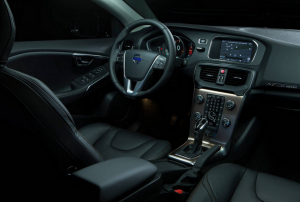How to Tailor An Automation System
Been car shopping lately? Built-in 4G Wi-Fi, backup cameras, lane centering programming, automatic GPS systems, built-in vacuum cleaners, automatic braking, surround sound, and automatic parallel parking are just a few of the complex features that automobile manufacturers are incorporating into new models to remain competitive. Creating even more obstacles on the factory floor, all of these options have fueled consumer demand for customization. Automakers face the challenge of maintaining low manufacturing costs and high output rates while also allowing for more individualization on each vehicle. An automation system, which you can tailor to each production process and space, can help automakers meet these complex demands. A few keys which allow you to tailor an automation system to achieve efficient mass production while maintaining customization capabilities is process integration and flexibility.
Integrated Processes
With so many advanced in-car technologies, most plants do not produce each and every component in-house, but by integrating as many steps as possible, the production time for each vehicle is minimized, thereby maximizing output and efficiency. Collaboration between automation engineers and the plant management should ensure that an automation design will tackle as many operations as possible. This collaboration will also help save valuable factory floor space, because each machine can be constructed for a specific area. A common example of process integration is in-line or end-of-line assembly testing. By incorporating testing equipment, like a hybrid cluster assembly line, into the production process, a manufacturer streamlines production time, possibly even reducing the time it takes to get a new product out on the market. A hybrid cluster assembly line is a standalone manual workstation that assembles and then tests instrument panels. One workstation completes multiple tasks that would traditionally require several phases. Production time is cut; time to market is reduced; the manufacturer gains an advantage over the competition.
Another way to think about integration is the multi-site integration of automation systems. If a manufacturer has several factories, then multi-site integration of automation equipment could be the key to standardized quality levels. Front air deflector equipment, for example, uses photo eyes and specialized proximity sensors to perform precise quality checks. By using the same machine at multiple factories, each and every front air deflector will be tested by the same standards, eliminating the risk of variation. Every automaker strives to surpass safety standards, but automation systems can help large automakers maintain their high quality and safety standards throughout the country or even world.
Flexibility
Every year, manufacturers must adapt their operations for new models. One year a car frame could be made of pure steel, and in its next generation, it could be comprised of a blend of high-strength steel, aluminum, and carbon fiber. A flexible automation system gives the manufacturer the ability to quickly adjust for material and part changes without completely halting workflow. This is critical because of the growing popularity of lightweight, energy-efficient vehicles. The flexibility provided by a sub-assembly workcell, which comes with interchangeable tool packs to accommodate various versions of the same part, helps workers easily make the appropriate adjustments to large press cylinders when producing automobile seat tracks. This workcell can be programmed to complete riveting operations for different designs, offering flexibility to adapt to any future construction changes.
Automation flexibility can be achieved not only through versatile machine parts but also through a system's software. Programmable Logic Controller (PLC) computer systems are commonly used to control automotive automation systems. PLC’s help automakers meet the increasingly complex and evolving demands of the consumer because, in some cases, a process can be adapted for upgrades or changes. If designed with a focus on flexibility, a seat frame assembly line may be able to easily tackle seat design changes over time. All that is needed to alter the final part is an updated PLC process. The ability to quickly adapt to vehicle design changes is crucial for workflow and production efficiency.
Automakers have come to rely on automation systems for efficient, cost-effective production. As vehicles become increasingly complex, automation systems must be able to offer the same benefits and also adapt to new technologies and design challenges. As long as an automotive automation system is designed with process integration and flexibility in mind, it will successfully tailor itself to the demands of the modern automotive industry.
Thanks to The NRMA on flickr for the image used in this post.
